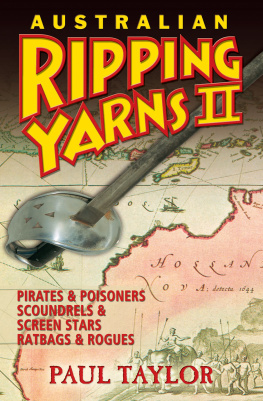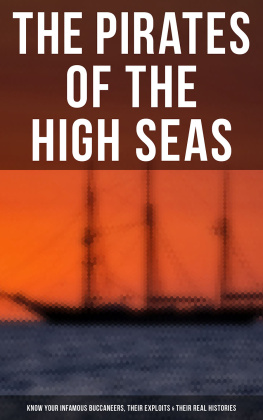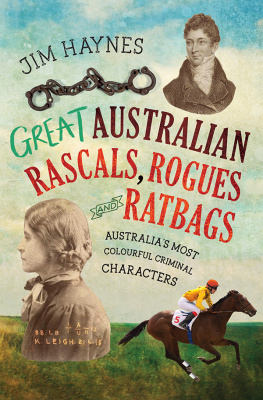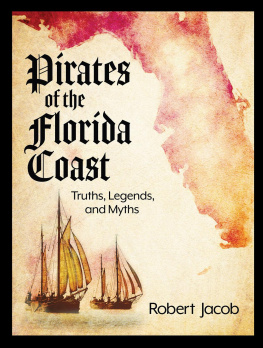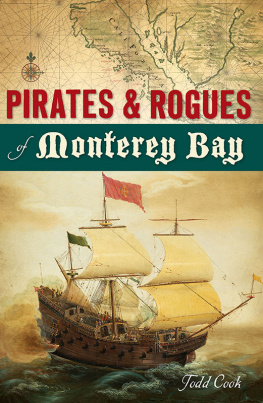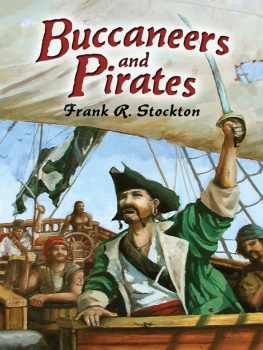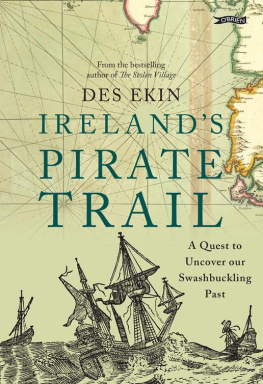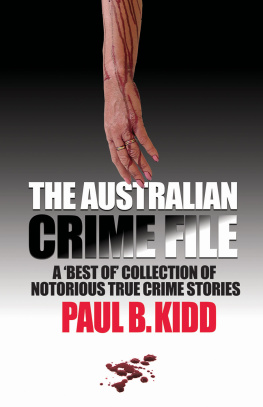Australian Ripping Yarns II
Pirates & Poisoners, Scoundrels & Screen Stars, Ratbags & Rogues
Paul Taylor
Editors Note
The stories in this book happened before Australia changed from Britains Imperial weights and measures to the metric system. For authenticity, and to avoid incongruity, the weights and measures are given as they were at the time. See the Conversion Table below.
Conversion Table
One inch = 2.54 cm
One foot = c. 30.5 cm
One yard = 0.914 metres
One mile = 1.61 km
One ounce = 28.3 grams
One pound = 0.454 kg
One ton = 1.02 tonnes
Preface
When the first Australian Ripping Yarns was published people asked, are there other stories like this, and how do you choose them? This second book of Ripping Yarns answers the first question and for the second how they were chosen the answer lies on the cinema screen. My measure of a Ripping Yarn is the movies. Could you make a movie from this or that story? Every one of the stories in this anthology could be the basis of an internationally successful feature movie, from the first, the pirate Dampiers epic of bloodshed and discovery, to the last, Horrie the Wog Dog, the mongrel war hero who hoodwinked the nation.
There are horror stories. The ghastly fate of the 70 passengers and crew of the Boyd most of them roasted and eaten might open on the thwack of the cat and flying bits of flesh as the Maori chiefs son took his flogging. The tragic and puzzling sinking of HMAS Sydney with every one of her heroic 645 officers and crew aboard, might fade to black with the great, doomed, cruiser a glow on the horizon. The Eugene Goossens affair a maestro ruined by his fascination with pornography and a rather nasty Kings Cross witch was a sensational news story that today, half a century later, we see clearly as a horror story.
There are comedy movies here. The Monty Python murder is a natural for Wes Andersons quirky direction, and the Francis James conundrum cries out for Geoffrey Rush doing his Peter Sellers act as The spy who never was. Or was he The imposter who never was ? An amusing question to mull over, but not one to compare with one of the 20th centurys most baffling whodunits: the BogleChandler killings in a Sydney Lovers Lane early on New Years Day, 1963.
There are the Westerns the bushrangers, as fascinating and as murderous as any in Americas Wild West. Almost all of them died violently, but the three in this anthology, though each came to a brutal end, were very different characters whose pseudonyms echo their personalities. Captain Moonlite was probably homosexual. Captain Thunderbolt, thoroughly heterosexual, was often accompanied by his beautiful part-Aboriginal wife. And Mad Dan Morgans savage and sad story was made into a movie with Dennis Hopper as the psychopathic killer.
The movies themselves play a role in this book. Annette Kellerman was that rarity an Australian woman whose life inspired a Hollywood movie, Million Dollar Mermaid with Esther Williams as the Australian wondergirl swimmer who became a Hollywood movie star.
55 Days at Peking starred Charlton Heston in the role of a gung-ho American marine sorting out the insurgents in the Boxer Rebellion. But the tale of the real-life star of the bloody Peking siege is recounted in The Boys Own adventures of the most influential Australian who ever lived Chinese Morrison.
The ideal Hollywood star to play Morrison would have been another handsome Australian adventurer, Errol Flynn Just a very naughty boy whose life, from his schooldays to his times dodging death at the hands of cannibals to his pathetic end in the arms of his under-age mistress, was one endless Ripping Yarn.
The sporting sagas our first Test triumph; unassuming John Landy losing and yet winning; Jack Johnson changing the course of sport with a callous and brutal thrashing of Tommy Burns are thrilling. The dramatic shipwrecks of the Dunbar and the Loch Ard are amazing and moving stories of survival.
Eccentrics like the enigmatic genius, Jorgen Jorgenson, will always intrigue us. And the first-hand accounts of the incredible savagery of our convict past still chill the blood.
Dramatic, mysterious, comic, blood-curdling and romantic, they are all riveting and true stories from our past, part of our tribal memory that should be preserved and celebrated for what they are: Australian Ripping Yarns .
Paul Taylor
Chapter 1
Buccaneers, cut-throats and castaways
The pirate who put us on the map
William Dampier, exhausted, was sprawled with the other pirates in a steaming jungle clearing on the Isthmus of Panama. It was raining, as it had been day after day. Relentless rain punctuated by rumbling thunder that drowned out all other sounds. They were running for their lives.
Behind, back at the smoking fort, the Spaniards were triumphantly parading the impaled head of the pirate captain and busy mutilating his dead crewmen. The attack on the fort had been a disaster and the Spaniards, when they tired of rearranging corpses, could be expected to come after the survivors, hunt them down in the tangled undergrowth and swollen rivers and the swamps swarming with mosquitoes and leeches.
In the jungle the pirates had made a pact: those who couldnt keep up would be shot to save them from falling into the hands of the Spaniards. Now, in the clearing, the ships surgeon and Dampiers close friend, Lionel Wafer, was sitting on the ground near one of our men, who was drying off gunpowder in a silver plate, but not managing it as he should, blew it up. The explosion shredded Wafers knee and shin and sent powder burns scorching up his thigh. He was in a bad way.
Would Dampier fight to save his friend? Or would he stay true to his pirate code?
William Dampier is an enigma. If he was an incompetent drunken coward, as some of the buccaneers who served under him claimed, he had an odd way of showing it. For more than 40 years and in the course of sailing three times round the world, Dampier did the things that pirates do: looting, pillaging and murdering from South America to Sumatra. But he was much more than a pirate. William Dampier was one of the greatest explorers, a man who had seen more of the world than any man ever had he was the first man to visit five of the seven continents and whose scientific records of those extraordinary journeys were felt for two centuries and more. Few have led a life more crowded with adventure.
Dampier followed in the bloodied footsteps of another and far more famous Englishman, the privateer Sir Francis Drake, who stormed Portobello on the Spanish Main a century before him. And in turn Dampier was followed a century later by another and far more famous Englishman, the navigatorexplorer, Captain James Cook, who like Dampier turned Englands eyes to the unknown continent of Australia.
Both men overshadow him. Yet neither could compare with Dampiers legacy of three books recording his experiences and his scientific observations. Cook relied on Dampiers observations when voyaging around the world; Darwin had his books on board the Beagle and Dampiers theory of sub-species influenced Darwins theory of evolution. Dampiers description of the breadfruit of the South Seas was the impetus for Captain Blighs voyage on the Bounty. And his account of his life as a pirate has strong resonance in three classics of English literature: Robert Louis Stevensons Treasure Island , Daniel Defoes Robinson Crusoe and Jonathan Swifts Gullivers Travels .

